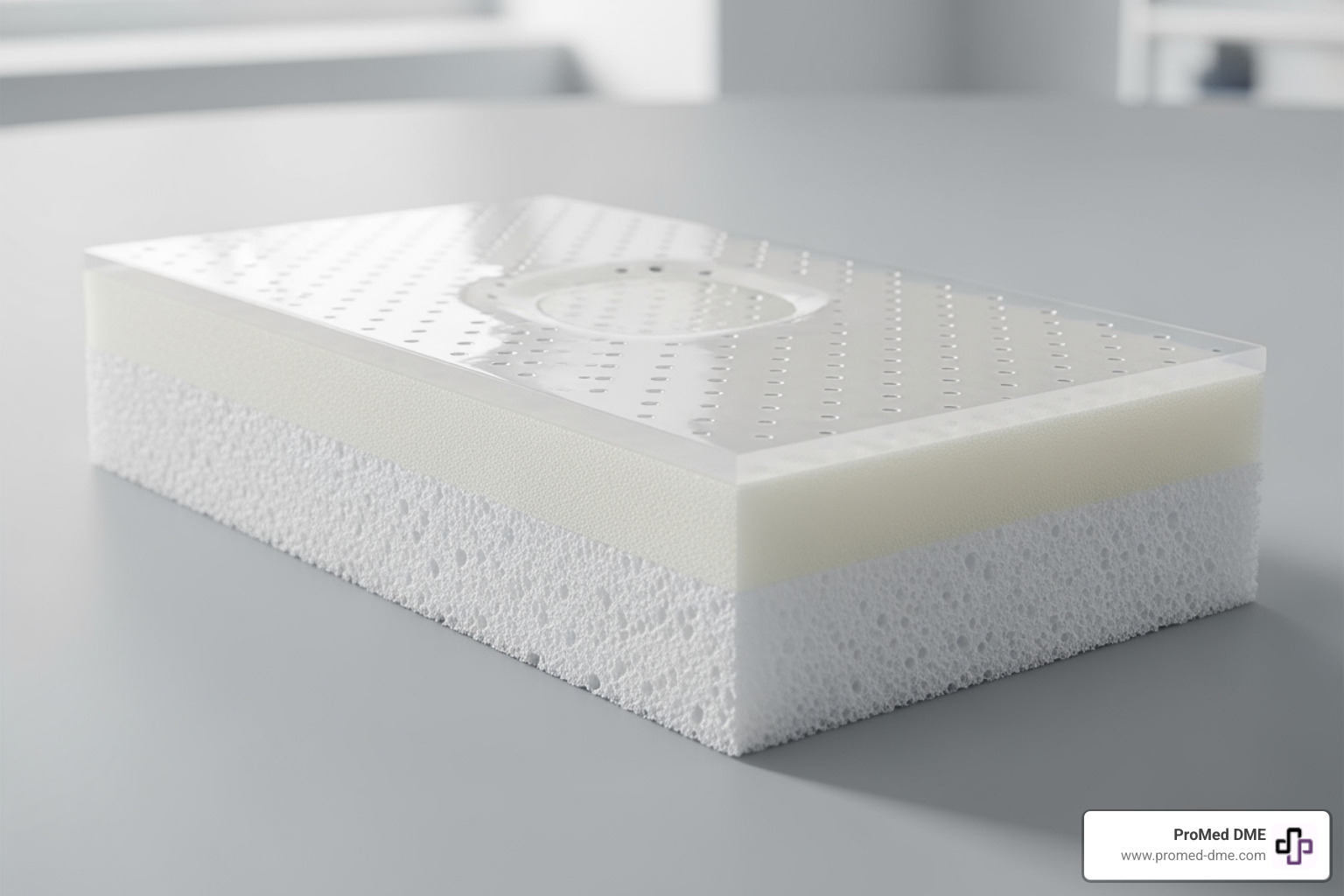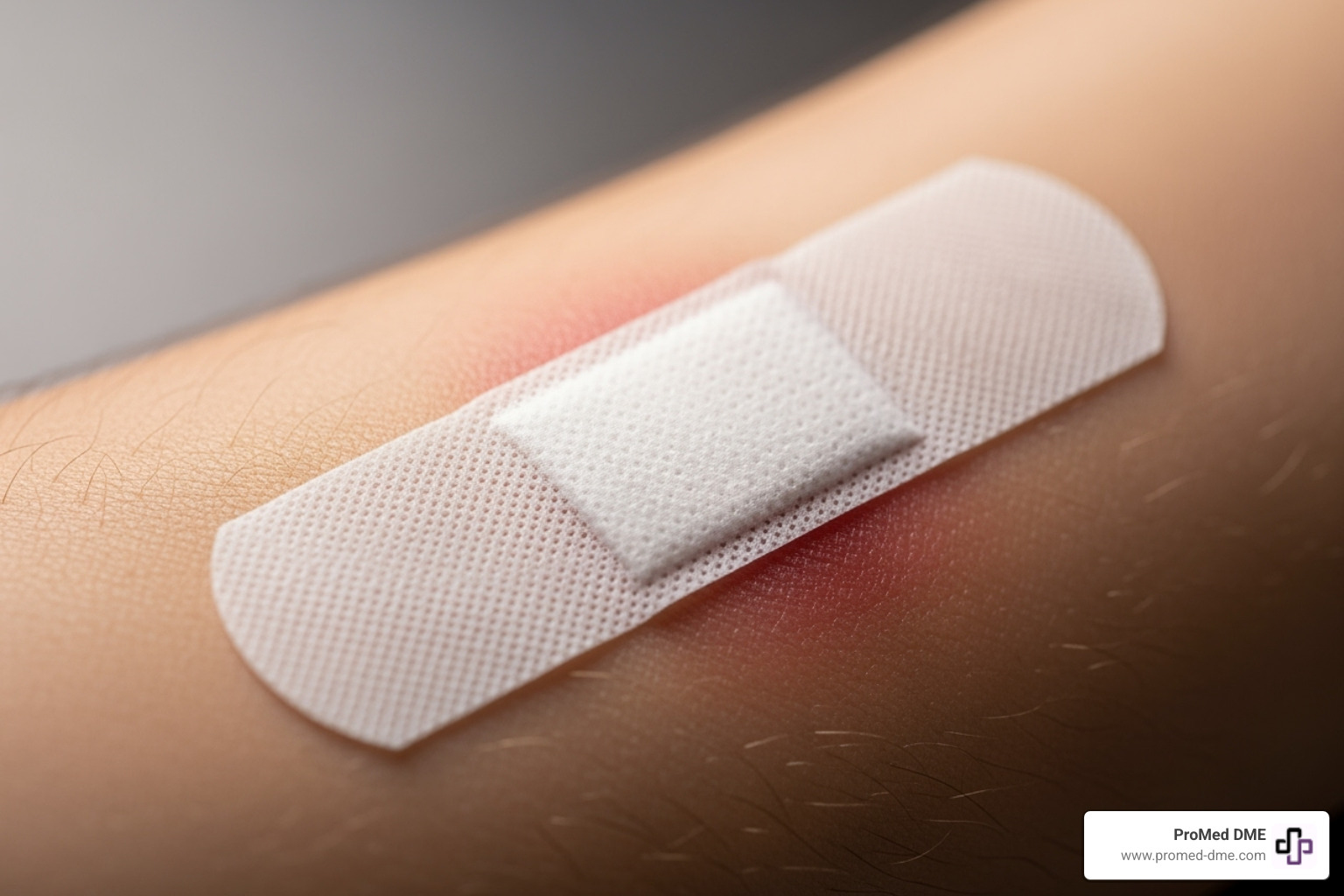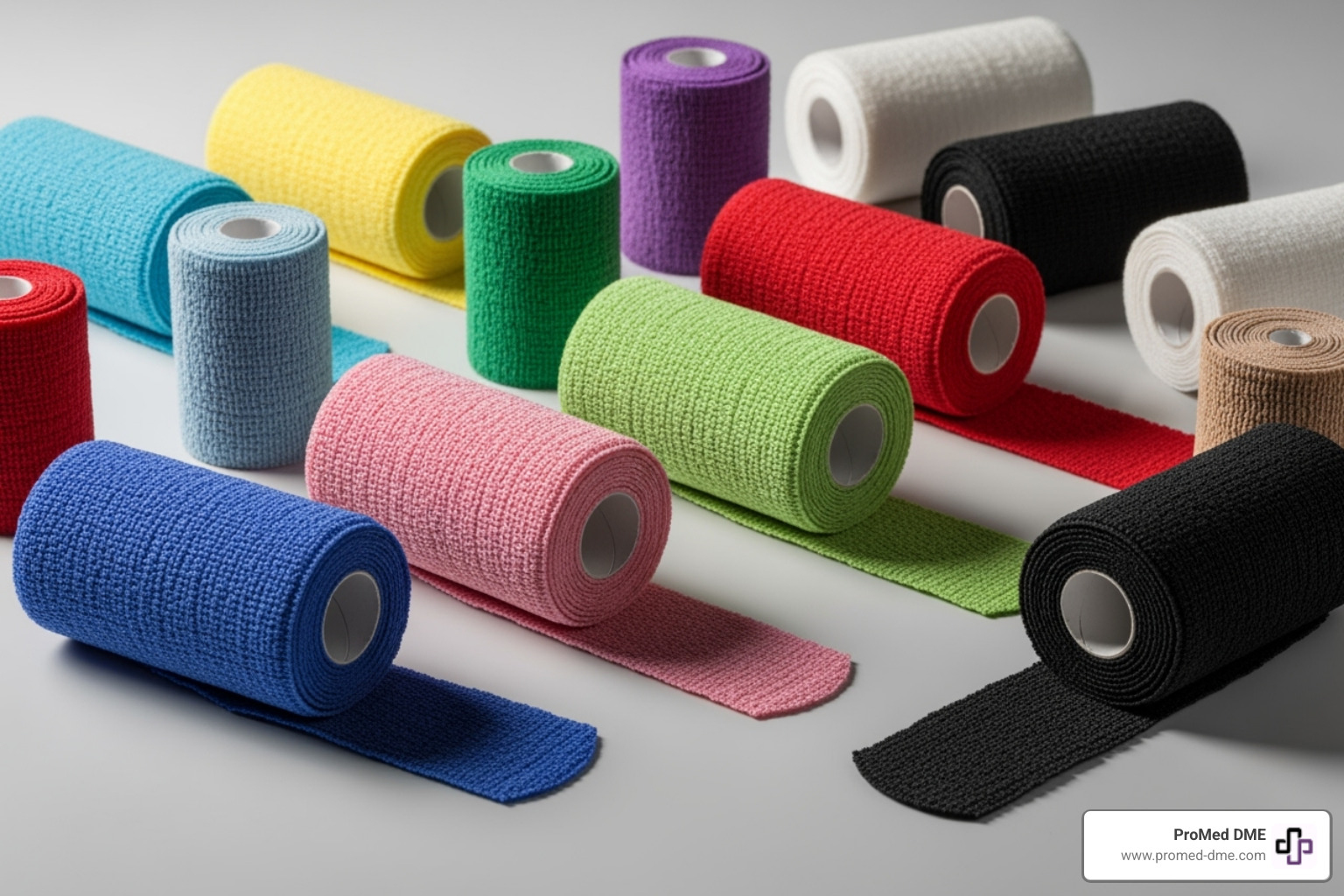Beyond the Burn: The Gentle Power of Soft Silicone Dressings
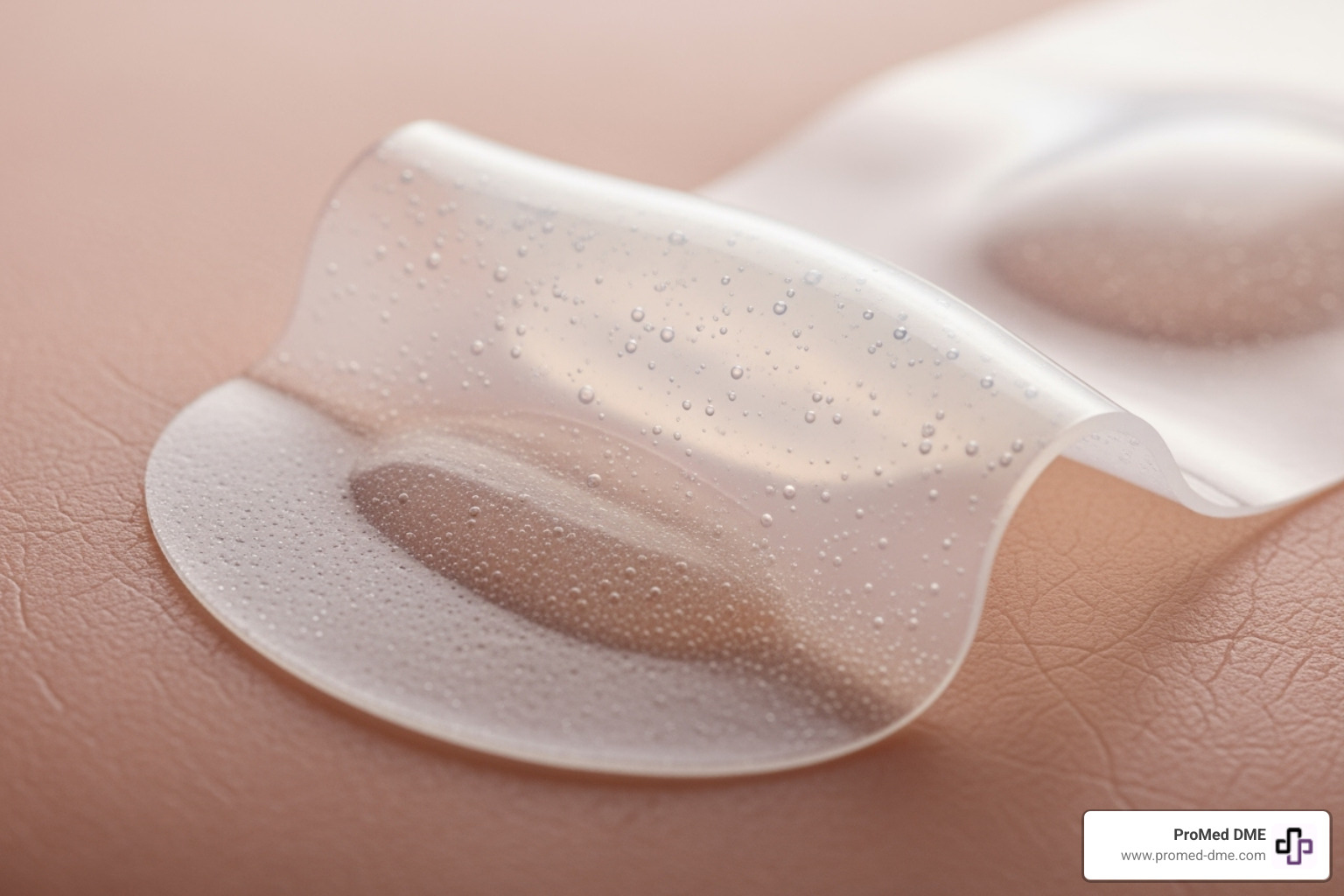
Why Soft Silicone Dressings Are Revolutionizing Wound Care
Soft silicone dressings are a breakthrough in wound care, combining effective healing with superior patient comfort. They feature a unique "tacky" silicone adhesive that gently adheres to healthy skin without sticking to the moist wound bed.
Quick Answer: What Are Soft Silicone Dressings?
- Material: Synthetic polymer dressings with a soft, tacky silicone contact layer
- Key Benefit: Gentle adhesion that reduces pain during dressing changes by up to 50%
- How They Work: Stick only to dry skin, not to wounds - preventing trauma during removal
- Best For: Fragile skin, elderly patients, chronic wounds, and high-movement areas
- Wear Time: Typically 3-7 days depending on wound condition and exudate levels
- Types: Contact layers, foam dressings, gel sheets, and bordered options
Unlike traditional bandages that can strip skin and cause pain, soft silicone dressings are atraumatic and protective. The hydrophobic nature of silicone prevents it from sticking to moist wound surfaces, making removal virtually painless.
This gentle approach is ideal for patients with sensitive or compromised skin. As research shows, "silicone dressings are particularly suitable for patients with fragile skin such as young children and elderly people."
For individuals managing chronic conditions or post-surgical care, these dressings offer a more comfortable healing process, reducing the anxiety associated with wound care.
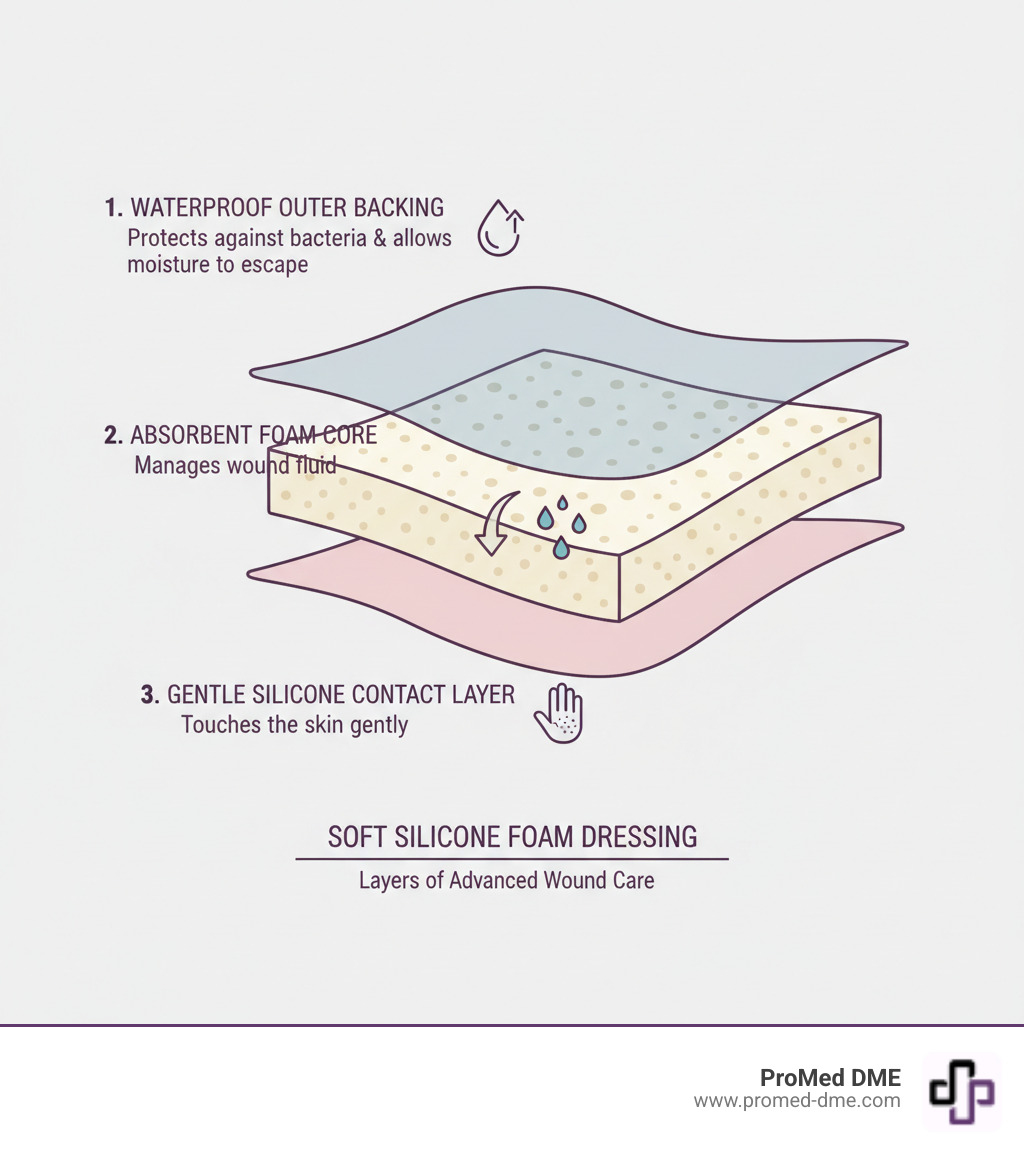
Common soft silicone dressing vocab:
The Science of Gentle Adhesion: How Soft Silicone Dressings Work
The science behind soft silicone dressings lies in their gentle yet firm adhesion. Silicone's unique "tacky" property creates thousands of tiny contact points with healthy skin, unlike the aggressive bond of regular tape.
A key feature is silicone's hydrophobic nature; it repels water, so it won't stick to the moist wound bed. This is crucial for comfort, as it allows the dressing to peel away without pulling or tearing delicate healing tissue.
Furthermore, silicone maintains a stable adhesion profile. Unlike adhesives that get stickier over time, silicone's grip remains consistent. It can even be lifted to check a wound and then reapplied without losing effectiveness.
This gentle approach promotes moist wound healing by protecting the wound from bacteria while shielding the surrounding skin from irritating drainage. For a deeper dive into the science, check out this detailed explanation of soft silicone dressings explained.
What makes a soft silicone dressing different from gauze or tape?
The difference between soft silicone dressings and traditional options like gauze or tape is significant, especially regarding patient comfort and skin health.
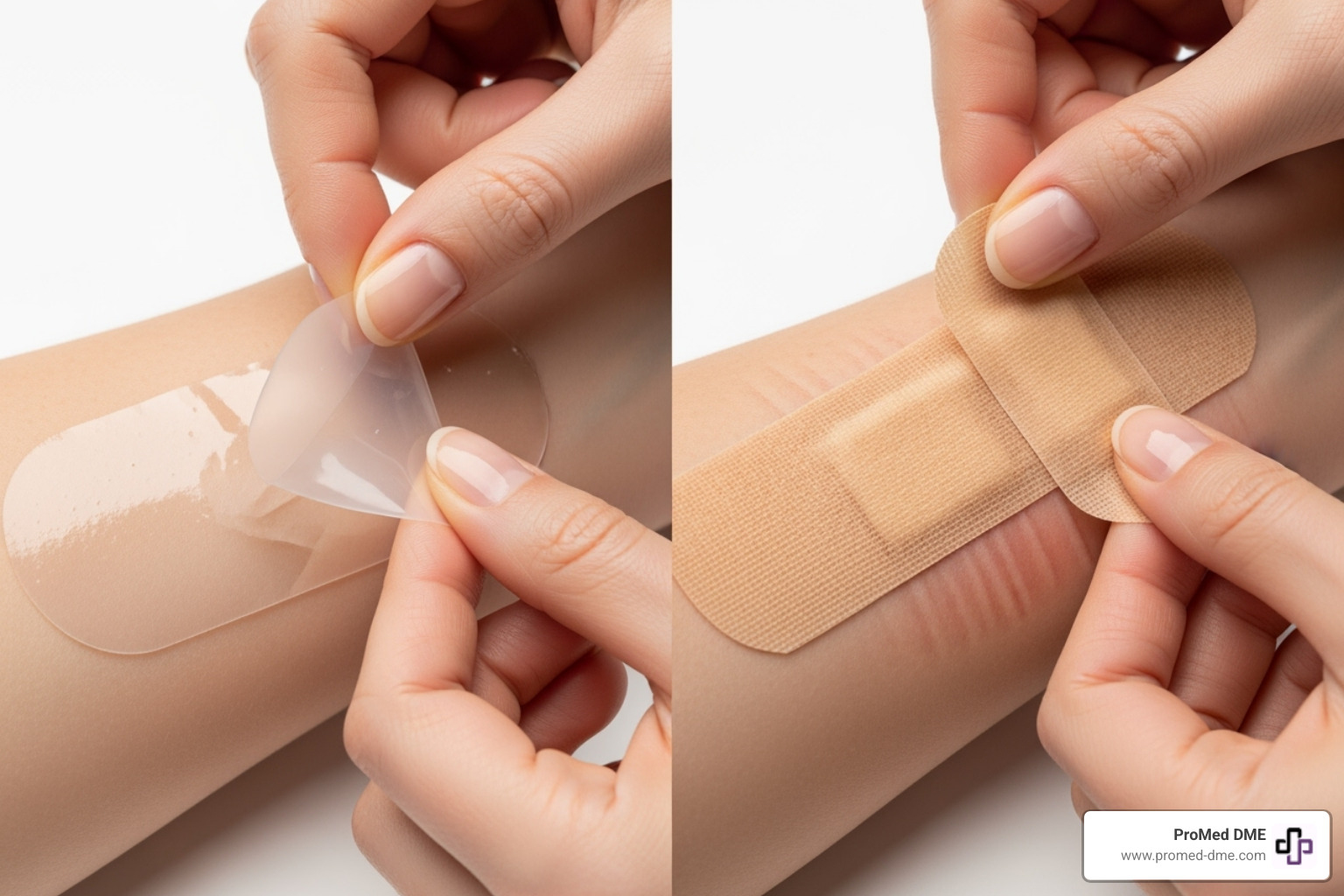
Traditional gauze can dry into the wound, causing trauma upon removal. Regular adhesive tape often strips skin, leaving irritation and residue. In contrast, soft silicone dressings offer:
- Gentle Adhesion: They create a secure seal on healthy skin without aggressive sticking.
- Non-Adherence to Wounds: They do not stick to the moist wound bed, ensuring pain-free removal.
- Longer Wear Time: Effective exudate management allows them to stay in place for 3 to 7 days, reducing the frequency of changes.
- Superior Exudate Management: Foam versions absorb drainage efficiently, protecting the surrounding skin from maceration (soggy, irritated skin).
How do they promote patient comfort and reduce pain?
Soft silicone dressings significantly improve patient comfort and reduce pain in several ways:
- Painless Removal: The primary benefit is minimizing pain during dressing changes. Because silicone doesn't stick to the wound, removal is atraumatic.
- Flexibility: They are made from conformable materials that move with the body, preventing pulling or pressure points on joints like knees and elbows.
- Breathability: A breathable backing allows moisture vapor to escape, preventing a clammy feeling and keeping the skin healthy.
- Reduced Irritation: Silicone is hypoallergenic and gentle, making it ideal for sensitive or elderly skin. It prevents epidermal stripping, where the top layer of skin is removed with the dressing, protecting the body's natural barrier.
A Guide to the Types and Technology of Soft Silicone Dressings
Soft silicone dressings come in various types to meet specific wound care needs:
- Silicone Contact Layers: Thin, porous sheets that act as a protective, non-stick barrier between the wound and a secondary absorbent dressing. They are ideal for fragile skin.
- Silicone Foam Dressings: These all-in-one dressings combine a gentle silicone contact layer with an absorbent foam core. They are available in bordered (with an adhesive edge) and non-bordered versions.
- Silicone Gel Sheets: Thicker, reusable sheets used for scar management. They can be cut to size and are flexible enough for use under clothing.
- Silicone Tapes: A gentle alternative to traditional medical tape for securing dressings or devices without causing skin trauma.
The technology behind these dressings is advanced. Polyurethane foam offers excellent absorption, while superabsorbent fibers handle heavy fluid. A vapor-permeable film backing allows the skin to breathe while blocking water and bacteria. Innovations include silver-infused options for antimicrobial protection.
Key features of a modern soft silicone dressing
Modern soft silicone dressings are engineered for optimal healing and comfort.
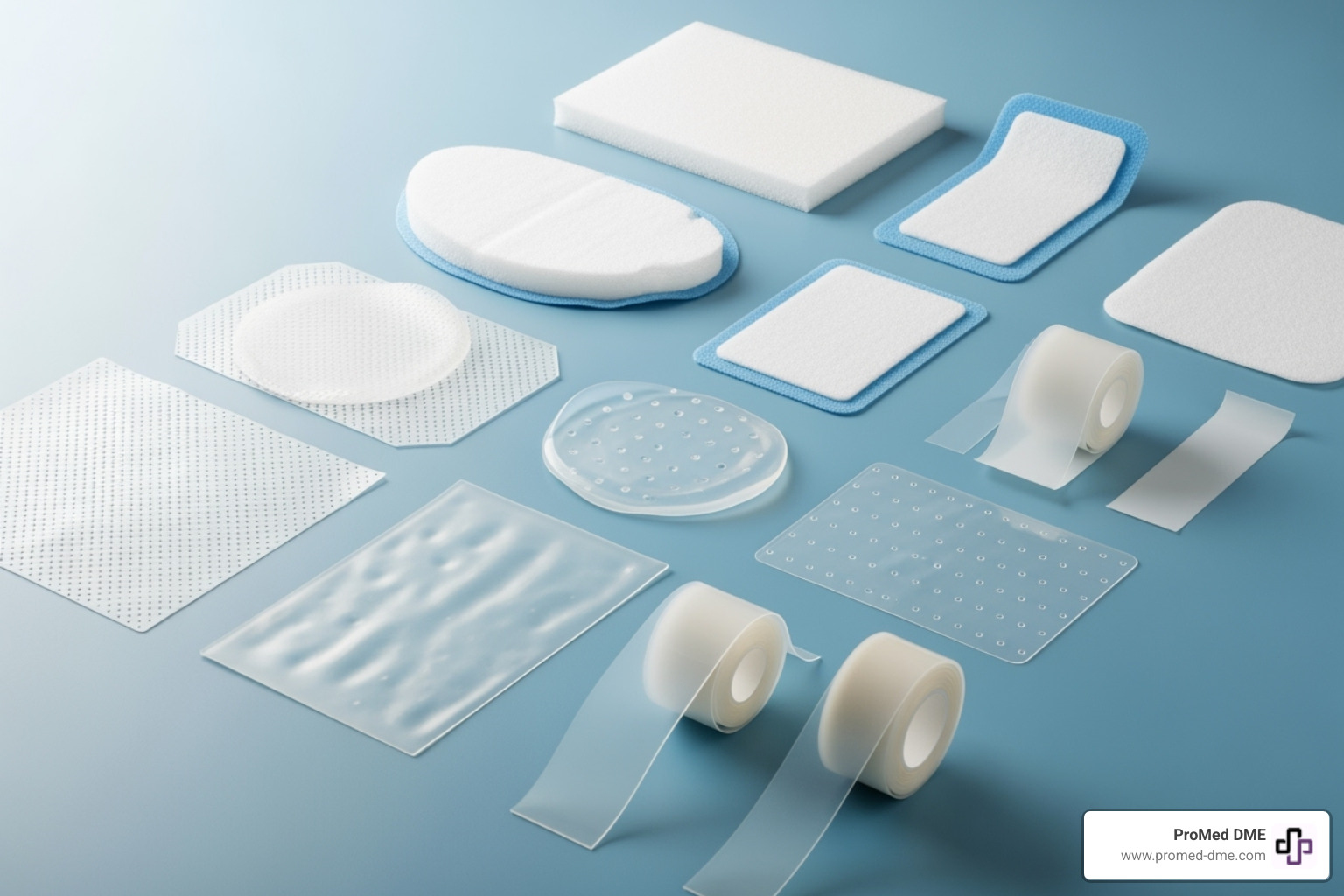
Key features include:
- Multi-Layer Construction: Premium dressings can have up to five layers, including an absorbent core (often polyurethane foam) that wicks fluid away from the wound.
- Waterproof Outer Film: This smart, vapor-permeable backing lets moisture escape while blocking water and bacteria, allowing patients to shower.
- Flexible Design: Engineered to conform to challenging body areas like elbows and heels, ensuring a secure seal during movement.
- Gentle Silicone Adhesive: The core feature, providing secure attachment with atraumatic removal.
Innovations in silicone dressing technology
The technology behind soft silicone dressings continues to evolve, making them more effective and convenient.
- Antimicrobial Silver: Many modern dressings are infused with silver, which provides antibacterial protection for up to seven days, making them ideal for wounds at risk of infection.
- Improved Conformability and Fluid Handling: Newer designs are more flexible, molding to complex body contours. They are also engineered for vertical fluid absorption, which prevents moisture from spreading to and damaging the surrounding healthy skin (maceration).
- Specialized Shapes: Manufacturers now offer dressings designed for specific body parts. For example, sacral-shaped dressings are contoured for the tailbone area, providing cushioning and pressure relief to help prevent and treat pressure ulcers.
Key Indications: When to Use a Soft Silicone Dressing
Soft silicone dressings are versatile and ideal for many situations, particularly where skin integrity is a concern. Key indications include:
- Fragile Skin: The gentle adhesion is perfect for elderly patients and pediatric care, where skin is thinner and more delicate.
- Sensitive Skin: They are an excellent choice for individuals who experience irritation, redness, or allergic reactions to traditional adhesives.
- Chronic and Acute Wounds: They are effective for both long-term wounds and recent injuries or surgical sites, as they protect the surrounding skin and promote healing.
- High-Movement Areas: Their flexibility makes them ideal for joints like knees and elbows, where they stay in place without restricting movement.
Using a soft silicone dressing for common wound types
Soft silicone dressings are effective for a wide range of common wound types:
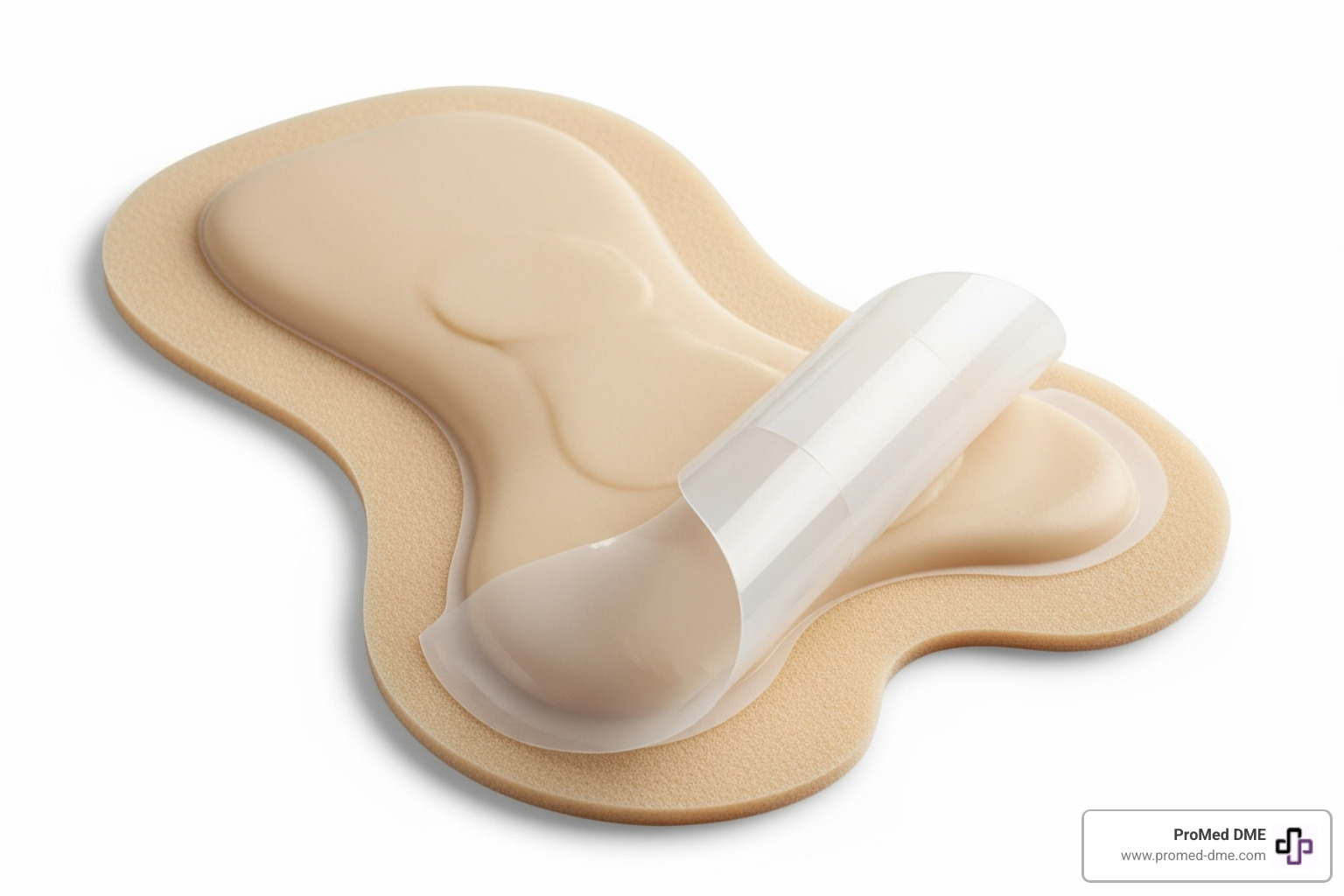
- Pressure Ulcers: Silicone foam dressings help reduce pressure and are available in special shapes (e.g., sacral) for difficult-to-dress areas.
- Venous Leg Ulcers and Diabetic Foot Ulcers: Their gentle removal is ideal for chronic wounds requiring frequent changes, and they manage drainage well, protecting surrounding skin.
- Surgical Wounds: They provide a protective barrier against germs, maintain a moist healing environment, and allow for gentle removal that won't disrupt healing incisions.
- Skin Tears: Common in older adults, these fragile wounds benefit from the gentle protection of silicone, which prevents further trauma during dressing changes.
- Minor Burns: The non-stick surface provides protection and pain relief for tender, burned skin.
The role of silicone in scar management
Beyond active wounds, silicone products play a key role in managing hypertrophic scars (raised scars within wound boundaries) and keloid scars (scars that grow beyond the original wound). When applied to newly healed wounds, silicone gel sheets and gels may help prevent these problematic scars from forming. For existing scars, they can help soften, flatten, and reduce their appearance over time.
It is thought that silicone works by creating a protective barrier that hydrates the scar tissue and helps regulate collagen production. While evidence on silicone for scar prevention is still evolving, it is a widely used strategy for scar management. Discuss this option with your healthcare provider if you are concerned about scarring.
Application, Management, and Understanding Limitations
Proper application and management are key to getting the most from your soft silicone dressing.
Best practices for applying and managing your dressing
- Prepare the Area: Gently clean the wound as directed by your provider. Pat the surrounding skin completely dry. Avoid lotions or creams on the skin where the dressing will adhere.
- Apply the Dressing: Choose a size that extends at least 1-2 cm beyond the wound edges. Peel off the backing and place the dressing over the wound, smoothing it from the center outward to remove wrinkles. Do not stretch the dressing.
- Monitor the Dressing: Check for signs that it's time for a change, such as saturation of the absorbent core, lifting edges, or increased discomfort. Most dressings can be worn for 3-7 days, but wounds with heavy drainage may require more frequent changes (every 2-4 days).
- Remove Gently: To remove, gently peel the dressing back parallel to the skin. It should lift easily without pain. Many can be reapplied for brief wound checks.
For more detailed guidance, see these frequently asked questions about silicone dressings.
Are there any contraindications or cost considerations?
While soft silicone dressings are versatile, there are some limitations to consider.
Contraindications are rare but include known silicone allergies, third-degree burns, and active, heavy bleeding. They are also not ideal for wounds with extremely heavy exudate, which may require a more absorbent dressing system. Basic silicone dressings are not antimicrobial, though silver-impregnated versions are available for infected or at-risk wounds.
Regarding cost, silicone dressings have a higher upfront price than traditional gauze. However, they are often more cost-effective in the long run. Their longer wear time means fewer dressing changes, which saves on both supply costs and nursing time. This also leads to faster healing, reduced risk of complications, and improved patient quality of life. At ProMed DME, we work with most insurance plans to help manage out-of-pocket expenses.
| Feature | Soft Silicone Dressing | Traditional Gauze Dressing |
|---|---|---|
| Wear Time | 3-7 days (can be reapplied) | 1-2 days (often needs frequent changes) |
| Pain on Removal | Minimal (gentle adhesion to skin, not wound) | High (adheres to wound bed, tears new tissue) |
| Cost Per Dressing | Higher | Lower |
| Maceration Risk | Low (manages exudate, breathable) | Moderate to High (if not changed frequently, poor seal) |
The overall value is seen in fewer supplies, less pain, and a quicker return to daily activities.
Frequently Asked Questions about Soft Silicone Dressings
We've gathered the most common questions our patients ask about soft silicone dressings to help you feel confident in your wound care journey.
How long can a silicone dressing stay on a wound?
One of the main benefits of soft silicone dressings is their extended wear time. Most can stay in place for 3 to 7 days, reducing the frequency of painful dressing changes. The exact wear time depends on several factors:
- Exudate Level: Wounds with heavy drainage may require a change every 2-4 days, while those with minimal drainage can often go the full 7 days.
- Wound Location: Dressings on high-movement areas like joints may not stay in place as long.
- Wound Condition: The dressing should be changed if you notice signs of leakage, lifting edges, or if there is increased pain, redness, or odor.
Always follow the manufacturer's instructions and the advice of your healthcare provider. If you have concerns, our dedicated nurse is available for guidance.
Can you shower with a silicone dressing on?
Yes, most modern soft silicone dressings have a waterproof backing that allows you to shower. This film acts as a barrier to water and bacteria while remaining breathable. Before showering, ensure all edges of the dressing are securely sealed. Avoid directing a strong stream of water onto the dressing.
While the dressings are showerproof, they are not designed for submersion. Avoid bathing, swimming, or using hot tubs, as this can compromise the adhesive. After showering, gently pat the dressing dry with a clean towel.
Are silicone dressings better than hydrocolloid dressings?
Both soft silicone dressings and hydrocolloid dressings are advanced wound care options, but they have different strengths. The "better" choice depends on the wound, skin condition, and patient needs.
- Adhesion: Silicone adheres gently to dry skin and not the wound, ensuring painless removal. Hydrocolloids form a gel that can sometimes adhere to the wound bed.
- Exudate Handling: Silicone foam dressings are excellent for moderate to heavy drainage. Hydrocolloids are best for light to moderate drainage.
- Skin Type: Silicone is superior for fragile or sensitive skin due to its gentle, atraumatic removal, which prevents skin stripping.
- Pain Reduction: Silicone dressings generally cause less pain during changes.
While hydrocolloids are effective for certain wounds and can aid in debridement, silicone is often preferred for its comfort and gentleness, especially on delicate skin. Our dedicated nurse can help you determine the most appropriate dressing for your specific situation.
Conclusion
Soft silicone dressings represent a major advancement in wound care, successfully blending effective healing with patient comfort. By adhering gently to healthy skin without sticking to the wound bed, they eliminate the pain and trauma of dressing changes. This technology creates an ideal moist healing environment, making it suitable for everything from chronic ulcers to post-surgical care and fragile skin.
The key benefits are clear: dramatically reduced pain, protection for surrounding skin, superior fluid management, and longer wear times. While the initial cost may be higher than traditional gauze, their long-term value is evident in fewer dressing changes, reduced complications, and improved quality of life.
At ProMed DME, we've seen how these supplies transform the healing experience. We are committed to making advanced dressings accessible, offering free shipping across the United States and a dedicated nurse on staff to answer your questions. We also work with most insurance plans to minimize your costs.
Your healing journey deserves the most effective and comfortable care available. Explore our comprehensive wound care solutions today and find how ProMed DME can support your recovery.
Related Resources & Articles
Stay informed with our informative blog posts.
Discover the ProMed Advantage
& Try Our Products
We offer free shipping and legendary customer service to ensure you receive the
best DME products for your needs.

